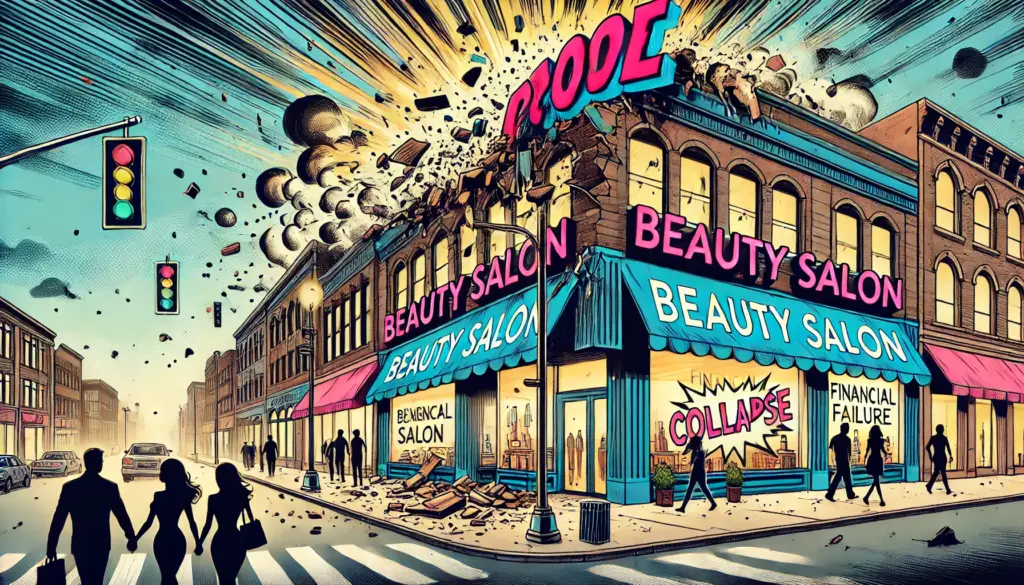
Japan’s beauty industry is renowned worldwide—and hair removal (脱毛) has played a starring role in that rise. Recently, however, several major salon chains have declared bankruptcy. This post explores what went wrong, why Japan came to dominate hair removal, and what the future could hold, with my own take woven in throughout.
1. A Sudden Collapse: What’s Changing?
In recent years, some of Japan’s most prominent hair removal salons have faced financial collapse. One of the largest chains, with hundreds of thousands of customers nationwide, suddenly declared bankruptcy with billions of yen in liabilities. Countless customers who had prepaid for “lifetime” or multi-year plans were left without refunds or unfinished treatments.
This was not an isolated case—multiple chains and clinics have shuttered within the past year, signaling that the once-booming industry may have reached a turning point.
2. What’s Behind the Collapse?
Several intertwined pressures pushed these businesses to the brink:
a) Overreliance on Prepaid Plans
Many salons relied heavily on prepaid “unlimited” packages. While these boosted short-term cash flow, they became liabilities when customer bookings slowed or operations faced disruption.
b) A Triple Burden
Rising advertising expenses, particularly celebrity endorsements, combined with high fixed costs such as equipment and real estate, created a crushing financial load. Meanwhile, fierce price competition slashed profit margins.
c) Market Saturation
With so many salons, medical clinics, and even small practices offering hair removal, the market became overcrowded. Services began to look identical, leaving salons competing only on price.
d) Weak Financial Management
Some operators lacked robust systems to manage cash flow, track liabilities, or forecast risks. This meant problems went unnoticed until it was too late.
e) Legal and Reputation Risks
Certain salons blurred the line between cosmetic and medical treatment, inviting legal scrutiny and damaging trust. Once confidence declined, recovery was nearly impossible.
3. Why Japan Became a Hair Removal Powerhouse
Despite the current crisis, Japan’s reputation as a “hair removal nation” was built on solid cultural and social foundations:
a) Deep-rooted Beauty Culture
Smooth, hair-free skin has long been considered a beauty standard in Japan. Seasonal fashion trends, media influence, and cultural emphasis on grooming accelerated this preference.
b) Affordable Expansion
Technological advances made treatments more accessible, while group discounts, installment plans, and aggressive marketing pushed hair removal into the mainstream.
c) Regulatory Environment
Japan’s strict but clear legal framework allowed salons to operate confidently within cosmetic boundaries—at least until some crossed into medical practices in pursuit of results.
4. My Perspective: Lessons from the Boom and Bust
- Sustainability beats hype – Unlimited lifetime plans may look attractive, but they are financially unsustainable.
- Transparency is essential – Clear contracts and refund policies protect both consumers and businesses.
- Differentiation is survival – Salons must offer unique value, not just price cuts.
- Cash flow discipline matters – Without careful monitoring, prepaid models can quickly spiral into insolvency.
- Compliance ensures longevity – Staying firmly within legal boundaries builds trust and prevents sudden closures.
5. What’s Next?
The collapse of major players does not mean the end of Japan’s hair removal industry. Instead, it may mark a shift toward quality over quantity.
Smaller, customer-focused salons emphasizing transparency, safety, and sustainable pricing are likely to thrive. Consumers, now more cautious, may favor providers who demonstrate accountability and reliability over flashy advertising.
In the long run, Japan’s hair removal market could emerge leaner but stronger—centered on trust, innovation, and customer satisfaction.
✨ Final Thoughts
Japan rose to prominence in the beauty world by normalizing hair removal as part of everyday life. The recent wave of bankruptcies is not just a financial story—it’s a cultural reckoning. From here, the industry’s survival depends on a shift away from mass marketing and toward a model that values sustainability, ethics, and trust.



















































